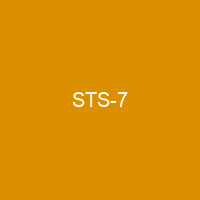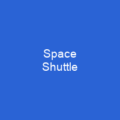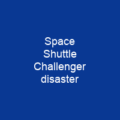STS-7: A Pioneering Mission
Imagine stepping into history as NASA launched its seventh Space Shuttle mission on June 18, 1983. This wasn’t just any launch; it was the second for Challenger and marked a significant milestone in space exploration.
The Crew of STS-7
Among those aboard were some notable names: Sally Ride, America’s first female astronaut, and Robert Crippen, who had flown on the inaugural mission. The crew was like a well-oiled machine, with each member playing their part in making this mission a success.
A Mission of Firsts
During STS-7, Challenger deployed several satellites into orbit, including Anik C2 and Palapa B1. These launches were crucial for expanding communication networks across the globe. But perhaps the most significant achievement was the presence of Sally Ride on board. She wasn’t just a passenger; she was a symbol of what women could achieve in space.
Orbiter Landing at Kennedy Space Center
The mission’s successful orbiter landing at Kennedy Space Center’s Shuttle Landing Facility on June 24, 1983, was a momentous event. It wasn’t just about the shuttle touching down; it was about proving that reusable spacecraft could land like an airplane, making space travel more accessible and efficient.
Challenges Faced
However, STS-7 also faced its share of challenges. One of the most notable incidents occurred when a piece of space debris damaged one of Challenger’s windows while in orbit. This was a stark reminder that even in the vastness of space, there are still dangers to be aware of.
The Foaming Incident
Another significant event during STS-7 was the first known foam shedding from the external tank during launch. While this might seem like a minor issue at the time, it would later prove to be a fatal flaw that led to the tragic loss of Space Shuttle Columbia and its crew during STS-107.
Legacy of STS-7
The legacy of STS-7 is one of both triumph and caution. It demonstrated what could be achieved in space, but it also highlighted the importance of thorough testing and safety protocols. Sally Ride’s presence on board was a beacon of hope for future generations, showing that gender should never be a barrier to pursuing dreams in science and technology.
As we look back at STS-7, we can’t help but wonder what other discoveries await us beyond our atmosphere. The lessons learned from this mission continue to shape the way we approach space exploration today.

STS-7 stands as a testament to human ingenuity and the relentless pursuit of knowledge. It reminds us that every step forward in space exploration is not just about reaching new heights but also about learning from our experiences, both good and bad.
Conclusion: STS-7 was more than just a mission; it was a pivotal moment in the history of space travel, marking the beginning of a new era where women like Sally Ride could lead the way into the cosmos.
You want to know more about STS-7?
This page is based on the article STS-7 published in Wikipedia (retrieved on November 29, 2024) and was automatically summarized using artificial intelligence.







